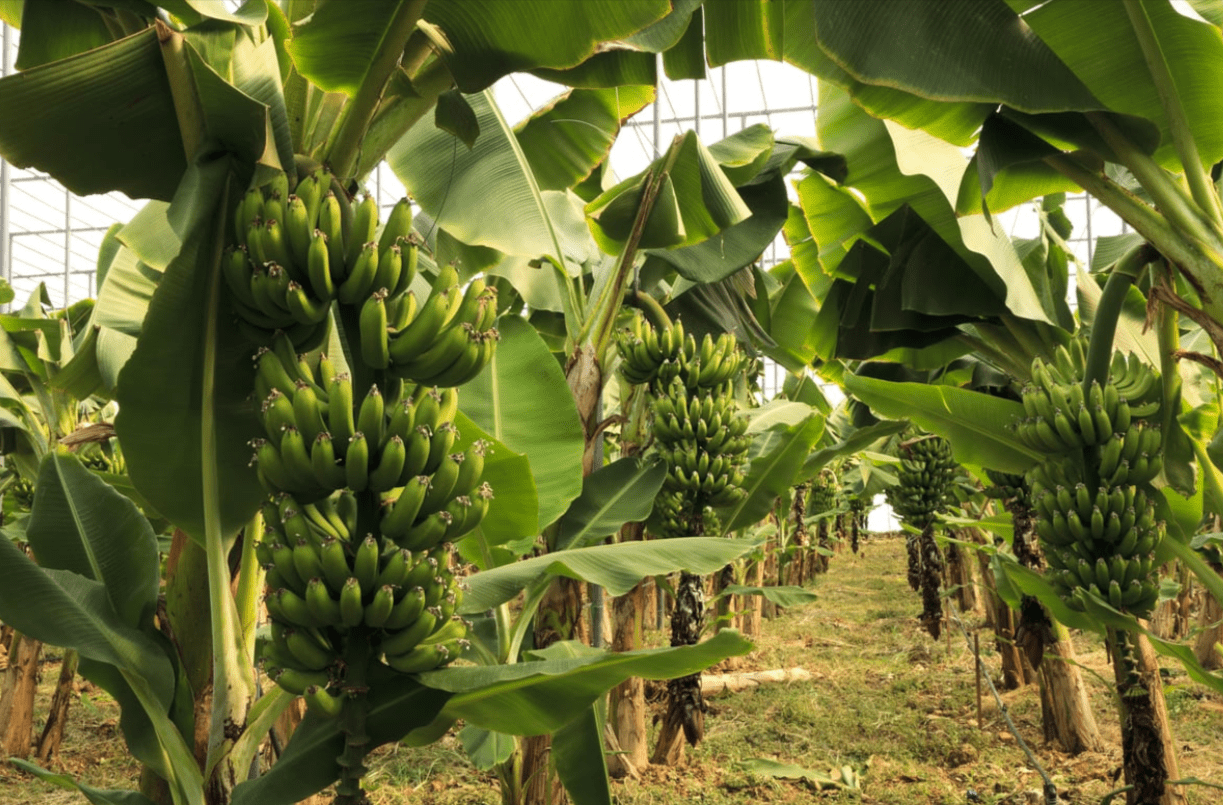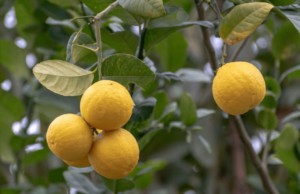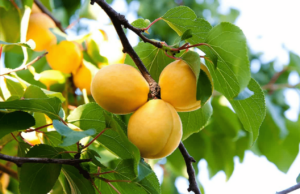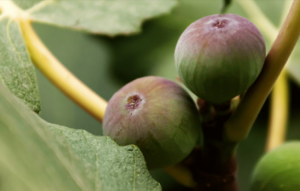How to Cultivate, Maintain, and Nurture Banana Plants
Whether you’re cultivating them indoors for their lush, tropical foliage or growing them outdoors to enjoy their sweet fruits, banana plants can be incredibly rewarding additions to any tropical garden. Gardening expert Madison Moulton shares her personal insights and tips to help you maximize the benefits of your banana plants.
Few gardening achievements rival the experience of savoring home-grown fruit. The taste of produce grown in your own garden often surpasses anything you can buy at the store, enriched by the care and effort you put into growing it.
Among the various fruits I’ve cultivated over the years—from lemons to lychees—bananas have been one of the most satisfying to grow. While bananas might not seem as exotic as some other fruits, the exceptional flavor and generous harvest they provide make them a worthwhile addition to your garden.
For those in tropical climates, banana plants are an excellent choice for first-time fruit cultivation. They also serve as stunning houseplants if you’re more interested in their decorative value than their fruit.
Growing bananas successfully is straightforward, but it requires a bit of understanding about the plant and its needs. This guide will cover everything you need to know to get started.
About Banana Plant
A close-up shot of banana fruit clusters reveals their growth on a tree in a sunlit garden. The plant forms bunches of bananas, known as hands, with each individual banana termed a finger. The fruits are elongated and slightly curved, covered in a thick green skin.
Bananas flourish in warm climates but can adapt to various conditions.
The banana plant, belonging to the Musa genus, is often misunderstood despite its tree-like appearance. In reality, it’s classified as an herbaceous plant—specifically, the largest herb you can grow—featuring a pseudostem rather than a true trunk.
The fruit is equally intriguing. Technically classified as a berry, bananas grow in clusters called hands, with each banana referred to as a finger.
Banana plants are a vital crop in tropical and subtropical areas. Beyond the fruit, other parts of the plant, especially the leaves, are used in a variety of culinary dishes, making it a highly versatile plant for your garden.
Their adaptability and resilience across different conditions make bananas an excellent choice for gardeners in warmer regions.
History
A close-up of a banana plant highlights its herbaceous nature and tree-like appearance. Despite resembling a tree trunk, the distinctive pseudostem is actually formed from tightly layered leaf bases. The plant features large, elongated green leaves with smooth surfaces and deep cuts.
Initially domesticated in Southeast Asia, bananas are thought to have been cultivated as early as 8,000 BCE. The spread of banana cultivation occurred through early trade routes, with Arab traders playing a key role in introducing bananas to the Middle East, eventually leading to their arrival in Europe.
It wasn’t until the late 19th century that bananas became a common sight in markets. Advances in transportation and refrigeration made it possible to export bananas from tropical regions to cooler climates, transforming them from a rare luxury into a staple fruit.
Historically, various banana varieties have been grown for different uses. Today’s common bananas primarily come from cultivars and hybrids of the Musa acuminata and Musa balbisiana species, or Musa × paradisiaca, a hybrid between the two.
Characteristics
A close-up reveals green banana fruits maturing amid large leaves in a garden. These elongated, curved fruits grow in clusters, transitioning from green to yellow as they ripen.
Banana plants feature a distinctive botanical structure and add significant aesthetic appeal to tropical gardens.
The stems, known as pseudostems, lack the woodiness one might expect from their tree-like appearance. Instead, they consist of a soft core encased in layered leaf sheaths, creating a tree-like look without the actual tree structure.
These pseudostems can grow up to 20 feet tall, adorned with long, glossy green leaves that can extend several feet in length. The leaves offer a striking tropical look with their arching shape, transforming any space into a tropical retreat.
Regarding the fruit, bananas develop in clusters called hands, which can be larger than anticipated. Each individual banana, often referred to as a finger, typically grows seedless in commercial varieties.
The skin of the fruit changes color throughout its ripening process, starting from green and turning to yellow when it is ready for consumption. The texture of the fruit can also vary depending on the variety you are cultivating.
Varieties
A close-up of red bananas shows ripe fruit clusters with a distinctive red-pink skin and white edible flesh inside.
Growing your own bananas provides the opportunity to explore various unique varieties beyond the familiar yellow Cavendish found in most stores.
Here are a few notable options:
- Cavendish: This widely recognized variety is known for its sweet flavor and creamy texture, commonly found in supermarkets.
- Lady Finger: These bananas are smaller and sweeter than Cavendish, prized for their delicate taste and thin skin.
- Red: With its rich color and sweet flavor, the red banana is a striking and delicious choice.
- Plantain: Unlike sweet bananas, plantains are typically cooked before consumption and are a staple in many Caribbean dishes, enjoyed in both their green and ripe forms.
- Dwarf Varieties: Perfect for smaller gardens or indoor cultivation, dwarf bananas like Dwarf Cavendish provide exceptional flavor on compact plants.
Planting
The seedling features an upright stem formed from layered leaves, which are elongated, narrow, and glossy green with pointed tips.
Select a sunny, well-draining location away from areas prone to waterlogging and strong winds.
The optimal planting time is late spring or early summer, once the soil has warmed enough to encourage vigorous root development. Mimicking the banana plant’s natural habitat is crucial for successful growth, starting with the right site selection.
Choose a location that receives full sunlight to maximize fruit production. Ensure the soil drains well and avoid areas where rainwater tends to pool, as excessive moisture can lead to root rot.
Banana plants are also prone to damage from high winds, which can tear their leaves, particularly when the plant is still establishing its roots. To protect your plant’s health and appearance, plant it near a windbreak or provide some form of protection.
When selecting a plant from a nursery, opt for ones with small, spear-shaped leaves, as these indicate healthy, vigorous growth. If possible, inspect the roots and choose plants with firm, healthy roots over those with long, stringy ones.
Space your banana plants about 8 feet apart to allow ample room for growth and prevent overcrowding. Dwarf varieties can be planted closer together if necessary, but it’s generally better to provide more space rather than less. After planting, water the sapling thoroughly to help settle the roots.
How to Grow
With the right planting approach and location, banana plants largely manage themselves, though a few extra steps throughout the growing season will help you achieve the best possible harvest.
Light
A close-up shows bananas ripening in the sunlight, growing in clusters known as hands, with each banana referred to as a finger. The fruits are elongated with a green skin.
Banana plants thrive in full, direct sunlight, ideally receiving at least 6 to 8 hours of sunshine each day. This exposure ensures the plants have enough energy to produce abundant fruit. While some afternoon shade can protect against leaf burn in areas with intense sunlight, maximizing sun exposure generally benefits the plants.
For indoor banana plants, direct sunlight or grow lights are crucial to support growth and fruiting. However, indoor conditions may not always be optimal for fruit production, and many indoor growers appreciate bananas primarily for their striking foliage.
Water
Watering a banana plant involves pouring from a blue bowl, illustrating the plant’s upright stem and large, glossy green leaves.
Bananas require consistent moisture, particularly during their peak growing phase, but they are also susceptible to root rot from waterlogged soil. Providing a steady, deep watering routine without over-saturating the soil helps maintain plant health and supports fruit development.
Monitor the moisture levels of the soil, especially in containers, to avoid prolonged dryness. In winter, when the plant’s growth slows, you can reduce watering frequency or pause altogether if winter rains are sufficient.
Adjust watering based on soil type, climate, and plant growth stage. Watch for signs like drooping leaves or compacted soil to gauge whether the plant is receiving the right amount of moisture.
Soil
A gardener holds a handful of loose, fresh soil near a young banana plant seedling, which features a short, thick stem and glossy green leaves.
Banana plants flourish in nutrient-rich, well-draining soil. A loamy mix with added organic matter, such as compost, creates an ideal environment for robust root growth.
A slightly acidic pH, ranging from 5.5 to just under 7, is preferred for optimal nutrient uptake. Testing and adjusting the soil before planting can prevent future complications.
Good drainage is crucial to prevent root rot. For potted plants, choose containers with ample drainage holes and a high-quality potting mix to ensure proper growth conditions.
Temperature and Humidity
A close-up of a banana flower in the garden, showcasing its burgundy-purple bracts and cone-like shape.
Banana plants thrive in warm temperatures, ideally between 60°F and 80°F. Temperatures below 50°F can slow growth, and frost can be particularly harmful.
These temperature requirements are suitable for USDA zones 9-11, allowing for year-round outdoor cultivation. High humidity, mimicking their native tropical environments, also promotes healthy growth.
For cooler zones, consider using greenhouses, frost cloths, or indoor containers to extend the growing range. In USDA zones 7-8, cold-hardy varieties may also be an option for those willing to experiment.
Fertilizing
A close-up of a banana plant with ripe fruits, highlighting its large, dark green leaves and hand-shaped clusters of bananas.
Banana plants are heavy feeders, requiring a rich supply of nutrients. A balanced 10-10-10 fertilizer is recommended, providing equal parts nitrogen, phosphorus, and potassium.
Monthly applications during the growing season are typically sufficient. Adjust based on the plant’s condition and growth. Avoid overfertilizing to prevent nutrient imbalances and potential root damage. Always follow the instructions on your fertilizer package.
Maintenance
A gardener prunes dry, brown leaves from a banana plant using a curved sickle. This traditional agricultural tool, with its sharp blade, is ideal for cutting or harvesting.
Routine maintenance involves occasional pruning to remove dead or yellowing leaves and old fruit stems. This not only improves the plant’s appearance but also helps channel energy into new growth and fruit production. Additionally, selectively thinning out suckers can be crucial for the health of the main plant.
Applying a thick layer of organic mulch around the plant’s base is also beneficial. Mulch helps retain soil moisture, suppress weeds, and gradually provides nutrients. This practice is especially advantageous in hot and dry climates, as it keeps the soil cooler and supports the plant’s nutritional needs.
For banana cultivation outside of their tropical origins, winter care is essential. Protecting the plant from frost, reducing watering, and moving container-grown bananas indoors can help them endure colder temperatures and thrive through the winter months.
Harvesting
An unripe banana covered with a black plastic bag is shown up close. The medium-sized fruits are slightly curved and elongated, with a light green skin.
Bananas typically reach harvest readiness about 10 to 14 months after planting, depending on growing conditions. Unlike some fruits, bananas continue to ripen after they are picked. Look for signs such as smoothed ridges and a subtle yellowing at the tips. The bananas should still be firm, and the small flowers at the tips should be dry and easily brushed off.
To assist with ripening, you can cover the banana stalks with a bag to trap ethylene gas. However, this method can sometimes lead to mold growth in humid conditions. I also use bags to protect the bananas from local wildlife. Monitor them closely to ensure you harvest at the optimal time.
Use clean, sharp pruning shears or a knife for harvesting. Cutting the entire stalk is the most efficient method, especially if you have a large bunch. For individual hands or single bananas, carefully cut them from the main stalk to avoid damaging the plant. After harvesting, if the main stalk has fruited, it will not produce again. Trim it back to make room for new suckers to grow.
How to Store
After harvesting, allow bananas to ripen indoors at room temperature. If you have more bananas than you can use immediately, storing them in a cool, dark place can help slow down the ripening process. Conversely, if you want to speed up ripening, place the bananas in a paper bag with an apple or tomato. This method enhances the ethylene gas concentration, which accelerates the ripening process.
Common Problems
While banana plants generally thrive well in tropical climates, they are not entirely immune to issues. Here are some common problems to watch for and how to address them to protect your harvest.
Root Rot
Root rot can be a significant issue, often caused by overwatering or inadequate drainage. This problem manifests as black spots on the stems and a yellowish tint to the plant. Leaves may also display dry, brown, or yellow edges.
To prevent root rot, ensure that your planting area has excellent drainage and avoid overwatering. Keep a close eye on rainfall and adjust your watering schedule accordingly. If root rot occurs, you may need to remove the affected plants and treat the soil with fungicides to prevent further issues and protect new plants.
Disease
Leaf spot diseases, caused by fungi or bacteria, can lead to unsightly discoloration and overall health issues for your banana plants. These diseases manifest as irregular spots or patches on the leaves, which can spread to other plants if not addressed promptly.
To manage leaf spot diseases, start by identifying the specific pathogen involved. This can often be done with the help of local extension services. Remove any affected leaves using sharp, clean shears, and apply the appropriate fungicides or bactericides as needed. Additionally, avoid overhead watering to minimize the risk of spreading the disease.
Pests
Pests such as aphids, spider mites, and scale insects can seriously impact banana plants by feeding on their sap and hindering fruit production. Regular monitoring is crucial to catch these pests early.
Treat infestations with insecticidal soap or neem oil to manage the problem. Additionally, encouraging beneficial insects like ladybugs can help control pest populations naturally and maintain a healthier garden environment.
Nutrient Deficiencies
Nutrient deficiencies, particularly in potassium and magnesium, can result in leaves with dry edges and yellow halos, as well as subpar fruit development. Identifying these issues typically requires a soil test to pinpoint specific nutrient shortages.
Once deficiencies are detected, apply a targeted fertilizer to address the imbalance. Allow some time for the plant to adjust and recover, and monitor its progress to ensure it returns to optimal health.
Frequently Asked Questions
Can banana plants grow indoors?
Yes, banana plants can thrive indoors with the right care. Ensure they receive adequate light through a sunny window or grow lights, maintain proper humidity, and select a dwarf variety suited for container growth. Regular pruning and attention will help keep the plant healthy and visually appealing, even if it doesn’t bear fruit.
When do banana trees fruit?
Banana plants usually start producing fruit between 9 to 12 months after planting, depending on the variety and growing conditions. After fruiting begins, it may take an additional 2 to 4 months for the bananas to ripen.
Are banana plants toxic to pets?
Banana plants are generally non-toxic to pets like dogs and cats. Nevertheless, it’s a good idea to monitor your pets’ interactions with plants and consult a veterinarian if you observe any unusual behavior or symptoms.
Will banana plants grow in shade?
Banana plants prefer full sun for optimal growth and fruit production. While they can tolerate some afternoon shade in hot climates, full shade will result in weaker growth, less fruit, and a higher risk of diseases. For the best fruit yield, aim to provide your banana plants with full sun.



